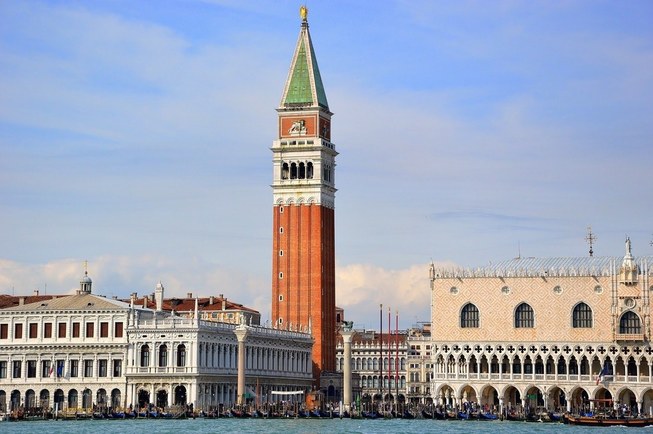Having celiac disease (CD) can make healthy eating a challenge. Many people diagnosed with CD afraid to travel because they are concerned about gluten-free food availability, a chance of cross-contamination, and having the language barrier to communicate with the venue staff. Instead of having fun while eating out or traveling, it can be extremely exhausting and stressful.
You should be very careful and selective with a destination of travel. CD is still rarely diagnosed in some countries and follow a gluten-free diet is a real challenge because gluten-free products are not available there.
The celiac disease is common in Europe, North and South America, Southern Asia, the Middle East, Australia, and Africa. About 1% of the population suffer from a coeliac disease in Europe. European Union has a strict regulation regarding the rules related to information on the absence of gluten in food. Commission Implementing Regulation (EU) #828/2014 lays down harmonized requirements for the provision of information to consumers on the absence or reduced presence of gluten in food.
The statement ‘gluten-free’ may only be made where the food is sold to the final consumer, contains no more than 20 mg/kg of gluten. The statement ‘very low gluten’ may only be made where the food, consisting of or containing one or more ingredients made from wheat, rye, barley, oats or their crossbred varieties which have been specially processed to reduce the gluten content, contains no more than 100 mg/kg of gluten in the food as sold to the final consumer.
The Association of European Coeliac Societies (AOECS) is the umbrella organization of European national coeliac societies with currently 35 Full Member societies across Europe. The AOECS provides guidance to producers and food safety inspectors for the manufacture of gluten-free products.
The European licensing system (ELS) Crossed Grains is administrated by AOECS. The producers and retailers who have the certification can use the Crossed Grain trademark on their gluten-free products.
In Europe is very common to use breadcrumbs and flour for coating meat, fish, and even vegetables. Moreover, it is common to add flour to thicken a soup, dip, sauce, etc. Some seasoning also can contain gluten.
When eating out, always have a travel celiac card with you and be aware the staff truly understand requirements for a gluten-free diet. Don’t be embarrassed to ask the waitress questions on each and every meal for your safety. If you are still in doubt, ask the chef for assistance to be confident in the gluten-free meal.
Italy, the United Kingdom, and Finland are heaven for travelers who should follow a gluten-free diet. There are thousands of venues providing numerous options for the gluten-free menu.
Employees are trained and monitored by the National Celiac associations in order to confirm their knowledge of food standards and guaranty quality for preparation of gluten-free meals. Gluten-free products are labeled and can be found in almost every supermarket and in many pharmacies.
The celiac disease is common in Europe, North and South America, Southern Asia, the Middle East, Australia, and Africa. About 1% of the population suffer from a coeliac disease in Europe. European Union has a strict regulation regarding the rules related to information on the absence of gluten in food. Commission Implementing Regulation (EU) #828/2014 lays down harmonized requirements for the provision of information to consumers on the absence or reduced presence of gluten in food.
The statement ‘gluten-free’ may only be made where the food is sold to the final consumer, contains no more than 20 mg/kg of gluten. The statement ‘very low gluten’ may only be made where the food, consisting of or containing one or more ingredients made from wheat, rye, barley, oats or their crossbred varieties which have been specially processed to reduce the gluten content, contains no more than 100 mg/kg of gluten in the food as sold to the final consumer.
The Association of European Coeliac Societies (AOECS) is the umbrella organization of European national coeliac societies with currently 35 Full Member societies across Europe. The AOECS provides guidance to producers and food safety inspectors for the manufacture of gluten-free products.
The European licensing system (ELS) Crossed Grains is administrated by AOECS. The producers and retailers who have the certification can use the Crossed Grain trademark on their gluten-free products.
In Europe is very common to use breadcrumbs and flour for coating meat, fish, and even vegetables. Moreover, it is common to add flour to thicken a soup, dip, sauce, etc. Some seasoning also can contain gluten.
When eating out, always have a travel celiac card with you and be aware the staff truly understand requirements for a gluten-free diet. Don’t be embarrassed to ask the waitress questions on each and every meal for your safety. If you are still in doubt, ask the chef for assistance to be confident in the gluten-free meal.
Italy, the United Kingdom, and Finland are heaven for travelers who should follow a gluten-free diet. There are thousands of venues providing numerous options for the gluten-free menu.
Employees are trained and monitored by the National Celiac associations in order to confirm their knowledge of food standards and guaranty quality for preparation of gluten-free meals. Gluten-free products are labeled and can be found in almost every supermarket and in many pharmacies.





